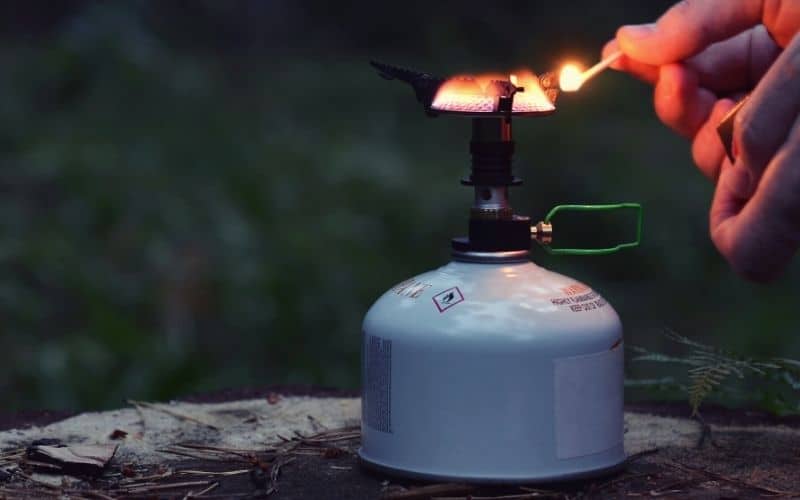Determining what type of fuel you should use for your camping stove can be confusing and the wrong choice can be disastrous. There are multiple types available: gas canisters, liquid, alcohol, solid, or biomass. Each has benefits and drawbacks that you should weigh up before heading out to the wilderness.
Sound confusing? Fear not! In this guide, we’ll explain all and help you find the best fuel for any outdoor adventure. Read on to learn all about the benefits and disadvantages of each type.
Table of Contents
Which Fuel should I choose?
Butane, Isobutane, and Propane Canister Gas
Canister gas is often the go-to fuel for backpacking stoves because it’s easy to use, versatile, and widely available. These cans are often affordable and user-friendly, even for beginners.
A key benefit of canister gas is how simple it is to use. Pressurized gas is typically contained in a prefilled canister that simply screws onto your stove (some connect with a hose). That movement opens a passageway for the fuel to escape and light your fire. The flame is easily controlled, so you can manually adjust how low or high you want the burner while cooking.
Most cans use a mix of propane with either isobutane or butane.
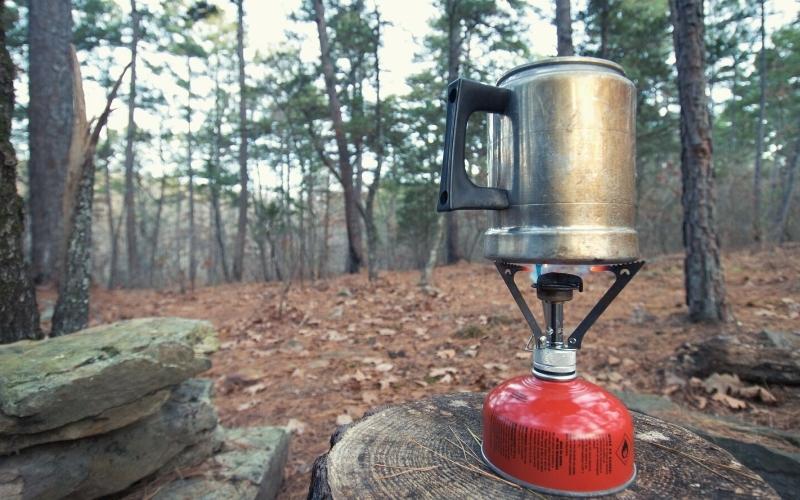
Propane is the most cold-tolerant gas of the bunch and functions better at high altitudes, so manufacturers often blend it in to garner some of those benefits (butane will have trouble igniting at 32 degrees F, while isobutane can go down to about 11 degrees F without issue).
Isobutane is even lighter than propane and uses less energy to heat up, allowing you to get more usage out of your canister.
Canisters provide a clean, quick, and efficient burn, so your water heats up fast and there’s no soot to clean up after you cook. Another great benefit of canister gas is that it can remain potent for years, allowing properly stored cans to be saved for later.
One drawback is that, when the gas gets low in the canister, performance can lag. It’s hard to tell exactly how much you have left in a can and it is a bulky addition if you need to bring an extra on the trail.
Also, while they work in slightly chilly temperatures, canisters don’t compare to liquid fuel options when it comes to cold-weather performance.
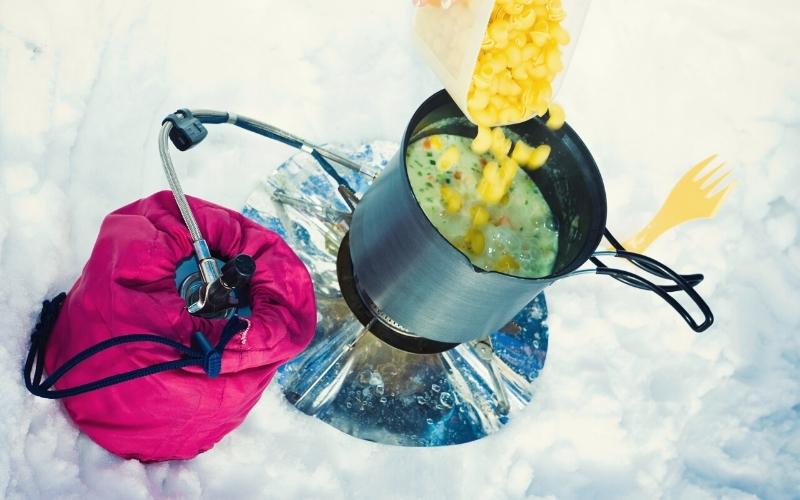
Alcohol
Alcohol is one of the lightest, cheapest, and most widely available options for backpacking stoves. You can even design your own alcohol stoves with empty soda cans. Alcohol fuel is easily purchased at an affordable price from most hardware stores. The cost and convenience make this the most popular backpacking stove fuel.
There are a variety of different types of alcohol fuels to choose from, most of which are affordable and widely available. Ethanol is usually the most expensive and the most difficult to find in stores.
Some are mixed with methanol, which is volatile and toxic, so use caution if choosing this option.
Isopropyl alcohol is a cheap and widely available option, you can even find it at most convenience stores. The biggest downside to it is that it produces a lot of soot, so be prepared to clean up a mess after use.
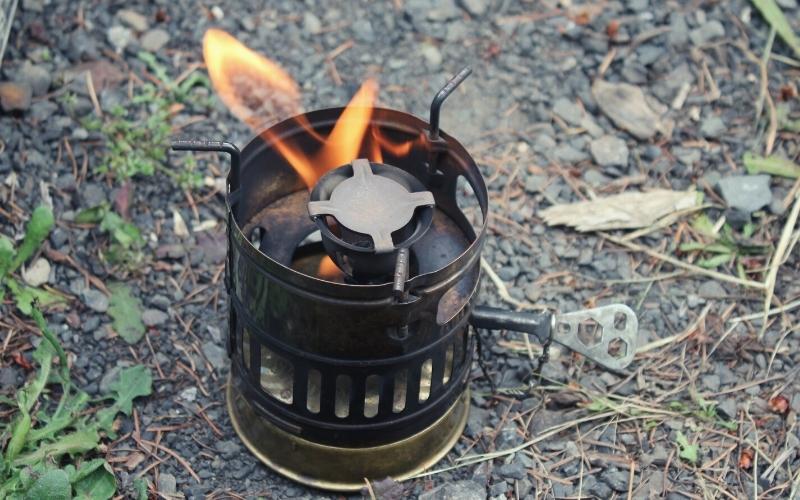
As far as cold tolerance goes, alcohol is the middle of the line. The vapors have to be fairly warm to ignite, so if you’re expecting cool weather try another option.
Alcohol also doesn’t burn as efficiently as some other options, so it might take a while when you’re trying to heat water or food and you’ll likely burn through it quickly. That said, the low heat output might be what you’re looking for if you plan to use your fuel inside a tent vestibule and don’t want anything burning too hot.
Alcohol can absorb moisture from the air, so ensure it’s sealed properly before putting it away in storage.
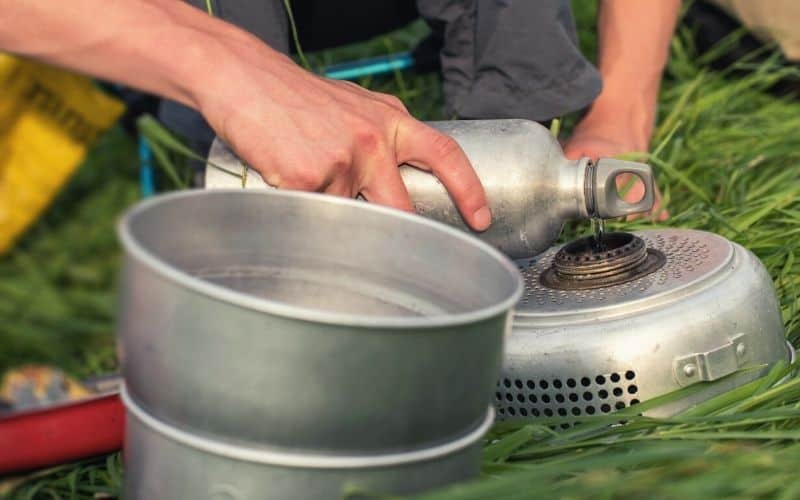
Liquid Fuels
While liquid fuel stoves aren’t quite as user-friendly as other options, the benefits outweigh the convenience.
With a liquid fuel stove, you need to fill and pressurize the can using an included pump. It might sound a little tricky, but it’s easy to learn. A benefit of this is that you get to decide how much to carry, so no need to carry extra bulk on longer adventures.
That little hand pump also allows you to maintain the pressure or repressurize when needed, so cold temperatures are irrelevant. This is a huge advantage when you’re in the snow or below-freezing temperatures – the most important time to ensure you have reliable equipment.
Depending on the type of liquid fuel stove you use, they are fairly affordable and easy to find in stores.
It’s important to remember that you have to burn off a little liquid fuel before you cook with it. The primer flame heats the coil and vaporizes the liquid fuel to create the cooking flame. If not done correctly, it could create a dangerous flare-up.
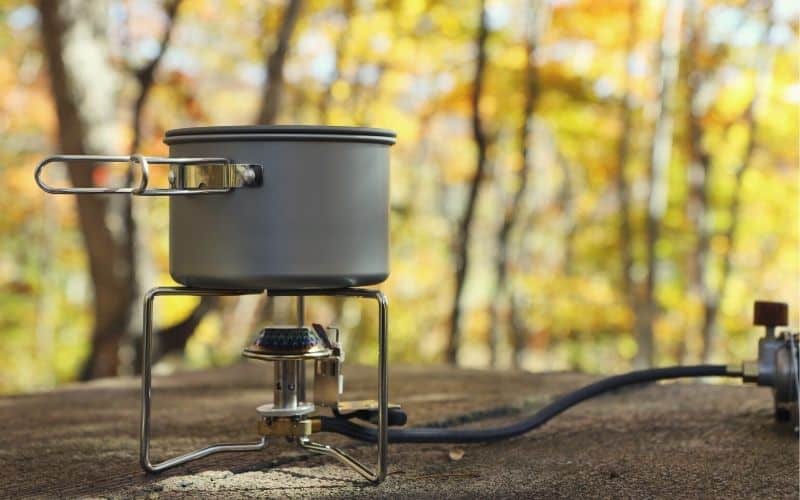
White Gas
White gas (aka “Coleman Gas”) is the cleanest-burning liquid fuel. It’s readily available, even internationally, and is a historically popular choice among campers and backpackers.
It’s easy to find kerosene in stateside stores but might be a bit challenging to track down when traveling abroad. It burns well but creates quite a bit of soot.
Diesel
Diesel is difficult to ignite and has a strong odor. On the plus side, it’s easy to find if you’re near a road with gas stations.
Vehicle Gas
Automotive/vehicle gas is as easy to find as diesel and more affordable. It also ignites faster than diesel. The biggest drawback is that the additives used in vehicle gas to make the engine run better can clog up gasoline stoves. It’s also volatile, so be cautious when using it.
Other Options
Solid/ESBIT
Some stoves burn solid fuel tablets. The custom tabs are usually lightweight and cheap, but often sticky, smelly, and can be hard to find out on the trail.
Biomass
Biomass (wood, twigs, leaves) is another option for a variety of stove brands. It cuts down on weight and bulk since you don’t need to pack any canisters. While this sounds easy, you may not be allowed to gather wood in certain locations or it simply might not be available. Burning wood also creates a lot of soot.
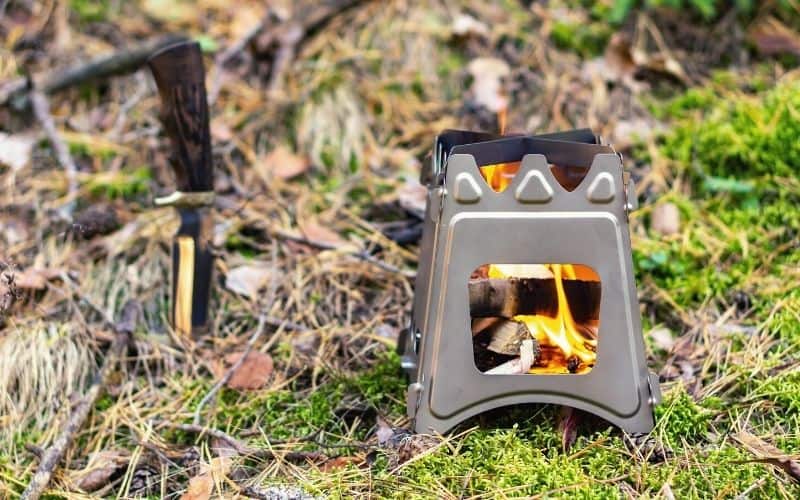
FAQ
How much fuel do I need for a camping trip?
That depends on a variety of factors. Are you cooking for just yourself or a large group of campers? Are you headed out for a night or two, or do you need it to last for several weeks? It also depends on the type of fuel you use, as some are more efficient than others, so check the listed burn time for different brands.
Which fuel is best for winter camping/cold-weather camping?
For winter adventures in cold temperatures, liquid fuel is probably the best choice. Since you can maintain the pressure, it will work when you need it the most. If using canister gas, you’ll need as high a proportion of propane blended with isobutane instead of butane (ideally around 80% isobutane and 20% propane).
Which option is safest?
While canister fuel is typically the safest choice for backpacking stoves, particularly for beginners, it comes down to what you are most comfortable using.
Camp Stove Fuel 101
Depending on where and when you plan on going for your next outdoor adventure, one of these fuel types is sure to work for your backcountry kitchen needs. Just be sure to keep your camp stove fuel stored safely, cook only outside your tent, and keep those flammables at a safe distance!
Hopefully, this guide has helped you sort out the differences and narrow down your options. If you have any questions, feel free to use the comment box below!
